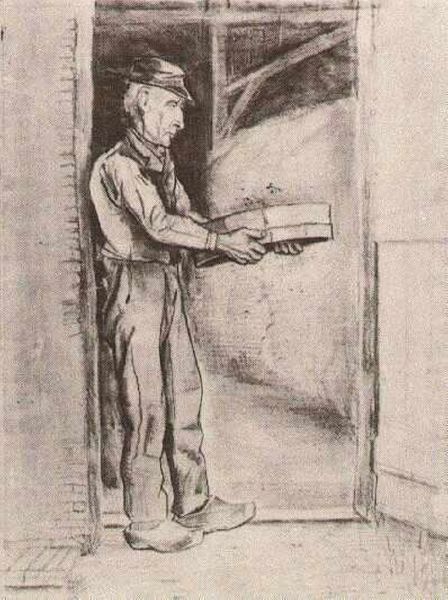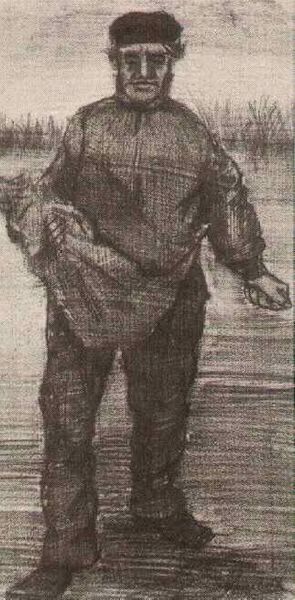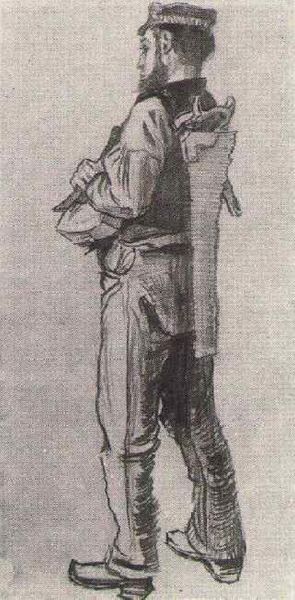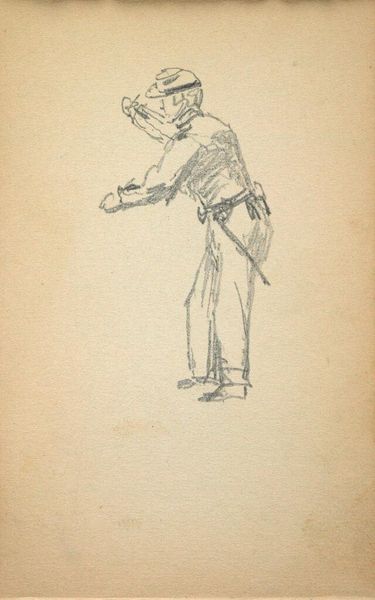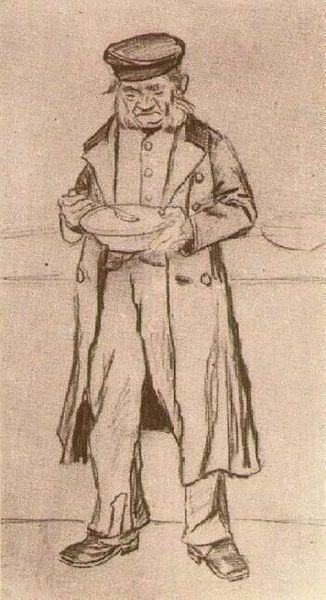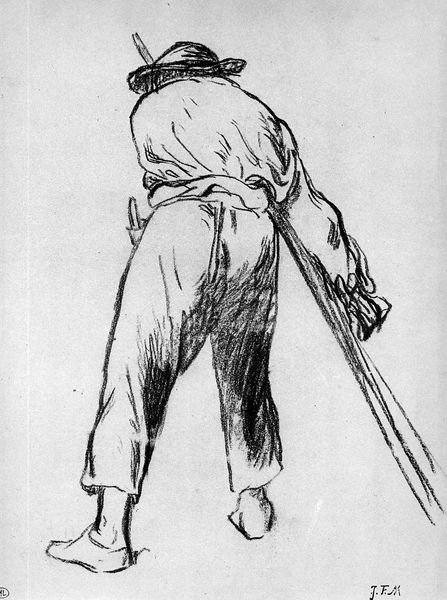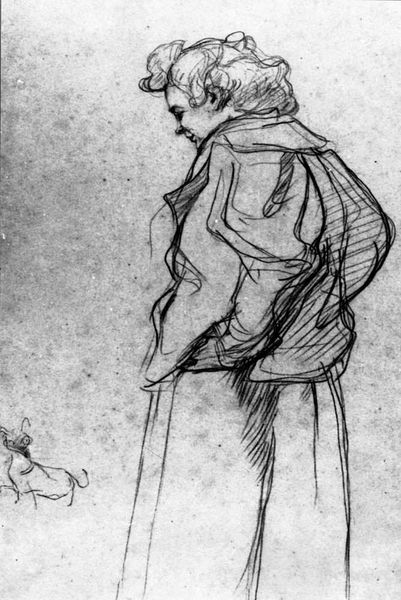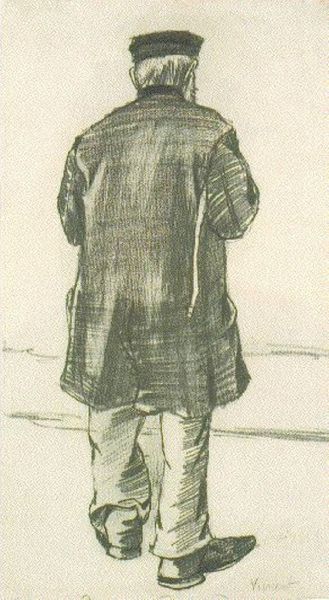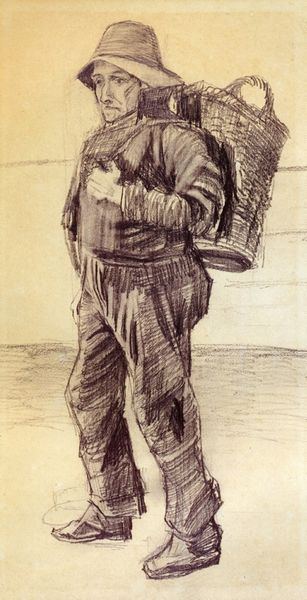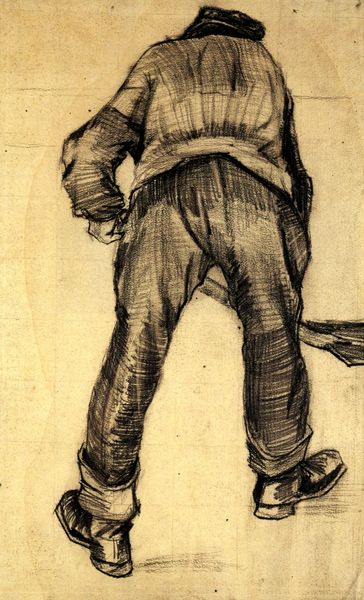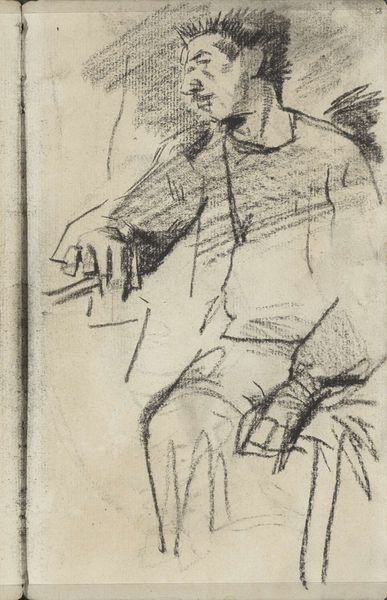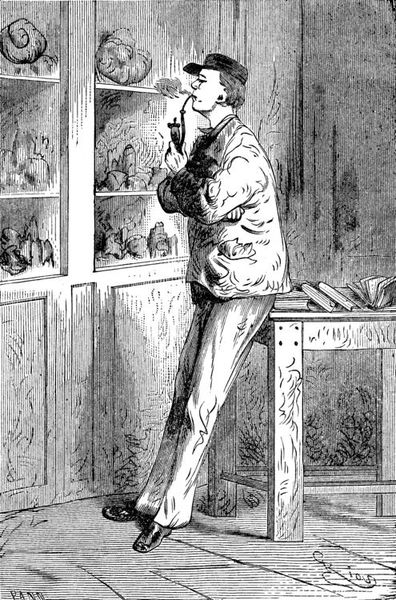
drawing, pencil, graphite
#
portrait
#
pencil drawn
#
drawing
#
pencil sketch
#
charcoal drawing
#
portrait reference
#
pencil drawing
#
sketch
#
pencil
#
graphite
#
portrait drawing
#
post-impressionism
#
realism
Copyright: Public domain
Vincent van Gogh made this drawing, “Man with Saw,” with pencil and charcoal to explore the life and labor of working people. In 19th-century Europe, the role of art was expanding beyond traditional patrons to include a wider public. Artists like Van Gogh saw representing the lives of everyday laborers as a critical project. Van Gogh made this drawing in the Netherlands, before his move to France. The image’s stark realism reflects the influence of Dutch Masters like Rembrandt. But unlike the heroic scale of earlier art, Van Gogh focuses on the humble details of work. The man’s worn clothes and simple tools speak to the realities of the working class. His intent gaze indicates dignity and respect. Art history helps us understand how artists responded to social conditions. We might look at the economic changes in the Netherlands, or the art institutions which were beginning to display art dedicated to laborers. Van Gogh’s image captures a moment in time, reflecting society’s changing attitudes toward labor and art’s role in representing it.
Comments
No comments
Be the first to comment and join the conversation on the ultimate creative platform.
